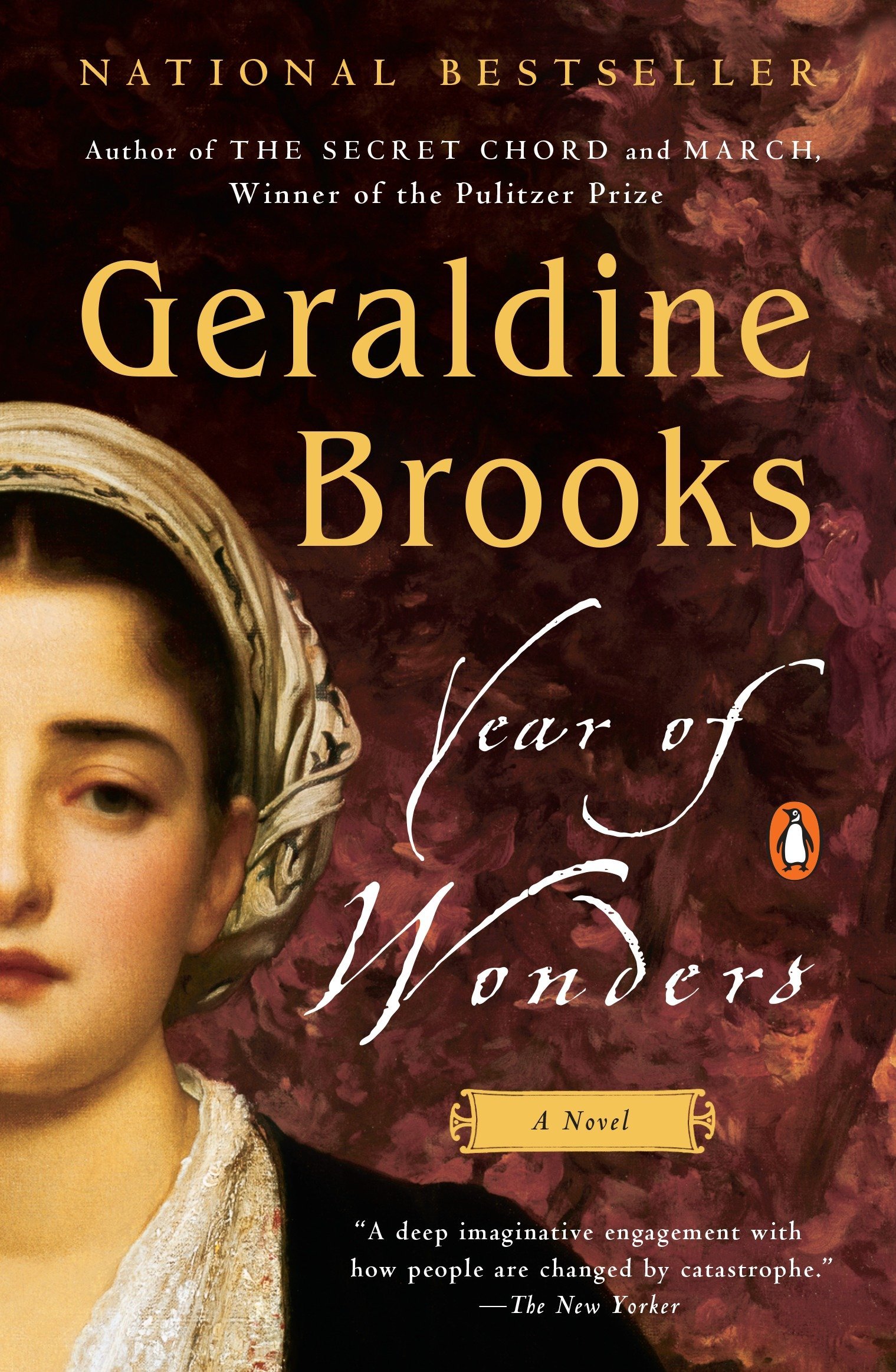While based in London, Australian-American journalist Geraldine Brooks often explored the English countryside. It was on one such journey that she came across a sign indicating the direction of the “Plague Village,” a discovery which led to her first novel, YEAR OF WONDERS, an intense, horrifying, and beautiful read.
The town in YEAR OF WONDERS is based on lore from a real seventeenth-century village in the English countryside called Eyam, which voluntarily quarantined itself to prevent plague from spreading beyond its borders. The narrator, Anna Frith, serves as a maid to the town’s minister, and accounts from Eyam mention their minister had a maid who survived the plague, indicating a real-life inspiration for Anna.
While this story encompasses lives and deaths throughout the village, it is all witnessed through Anna’s eyes, and it is her character development that truly moves the story. The plague outbreak coincides with the Reformation. The village is a combination of Puritan and Protestant faiths, including a strong belief in the existence of witches. Anna does not share all strict Puritan values, but her fear also keeps her from challenging them. She even refuses to learn from the apothecary, for fear of being branded a witch. As the story continues, though, and the situation becomes more dire, Anna takes on a leadership role within the society, becoming their healer and often the voice of reason, and standing up to her own demons.
Beyond Anna, Brooks creates a village of fully fleshed-out characters. From a gravedigger run ragged in an attempt to service each grieving family, to a man who turns to self-punishment in order to “beat” the plague, to the mob that lynches two supposed witches, each individual has their own backstory, role within the community, and flaws. One of the greatest strengths of this novel is that, while it literally contains an entire village of characters, they do not blend together. A glimpse is provided into each of their lives, and we see how different individuals react to the devastation.
I began reading this book out of an interest in historical fiction. As a teenager, I read several young-adult novels dealing with the plague and deadly fevers, and I was excited to find a book aimed toward an older audience focusing on a similar subject. The plague does serve as a backdrop and the inciting incident for this novel, but it’s the detail of Brooks’ research and the deeply human characters, with all of their blemishes exposed by desolation, that make this novel a fascinating read.









